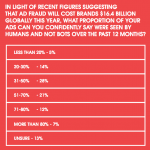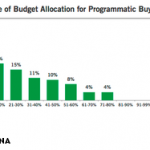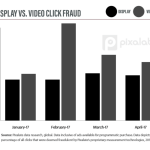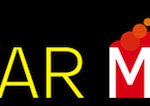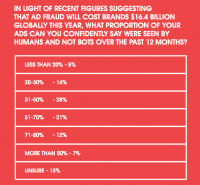What Role Does Programmatic Media Play In Brand Safety?
What Role Does Programmatic Media Play In Brand Safety?
by Tobi Elkin, Staff Writer @tobielkin, March 29, 2017
With the issue of brand safety front and center amid advertiser concerns over the possibility their ads will appear next to offensive content on Google’s YouTube, RTBlog asked industry executives to weigh in on the matter, and the degree to which programmatic media buying practices have exacerbated the issue.

“The timing of the YouTube debacle is definitely unfortunate, with upfronts right around the corner and advertisers deciding where to allocate budget—to digital, where audiences are continuing to move, or TV, where you have more precise control over the content surrounding your ad. It shines a spotlight on the potential risks that come with automation, regardless of industry,” Marika Roque, VP of digital media activation, Nexstar Digital, a digital media and marketing agency, told RTBlog via email.
“Programmatic has undoubtedly created new opportunities for brands, allowing for incredible scale, targeting and efficiencies, but safeguards which simply can’t be automated, yet, have to be put in place by publishers, advertisers and agencies to ensure that the approach doesn’t come at a major cost to brand reputation,” she said. “Ultimately, Google is in a position to lead by example, and has to put a deeper stake in the ground when it comes to having a consistent approach around how it’s going to police content and where it will and will not allow ads. Will that approach likely make everyone happy? Of course not. But at least the consistency will make it less likely for these errors to occur.”
“Since advertisers can only buy YouTube media programmatically through DoubleClick (DBM), which couples programmatic technology with the inventory it monetizes, there is an inherent conflict. This immediately raises the concern of monetization taking priority over protections like brand safety,” Ronnie Lavi, Innovid’s SVP of product, told RTBlog via email. “This is the fundamental problem with walled gardens which limit third-party controls. As an open and media-agnostic platform, we believe that third-party measurement and optimization are a necessity. Brands are spending huge budgets and they deserve to have the same transparency from YouTube that they get elsewhere.”
As to whether Google doing enough to address advertisers’ concerns about brand safety, Nels Stromborg, EVP of Retale, a mobile app that enables consumers to browse store circulars, told RTBlog that the brand safety issue, which includes viewablity, isn’t a new problem. “In the last three to five years, the velocity of this conversation has picked up dramatically because brands have now woken up to these challenges which are impacting the campaigns they’re running. Google employs teams of people who review content 24 hours a day to make sure it’s consistent with its promise to consumers and partners. It also uses technology in an effort to both turn away highly objectionable content, as well as to marry its advertising partners to the right consumers. Unfortunately, these fail-safes aren’t working as well as anyone had hoped,” Stromborg said.
“Advertisers didn’t really want to be bothered with this several years ago,” Stromborg added. “They weren’t spending enough money, and consumer adoption of digital devices still seemed to be years away. Now both consumer usage, and the dollars being spent have made this a critical issue. If your brand isn’t digitally present, you’re not speaking to huge segments of the population.”
Stromborg thinks programmatic technologies have made the problem worse: “Because of the nature of automated programmatic ad buying, and the number of long-tail publishers that are placed into many exchanges, the quality of the content isn’t nearly as strong as it is in the top 10 sites. If you’re blindly buying media in those exchanges, it’s highly likely that you’ll be placed next to content that less than desirable for your brand.”
So what tools should advertisers, ad networks and/or agencies be using to reduce risk and improve accountability?
Stromborg maintained that brands need to understand how their media is sourced, the technology behind the execution, and the verification tools and methodologies their agency or ad tech partners are recommending. “Frankly, it’s a lot of work. Simple things like the practice of ‘white labeling’ site lists can help a lot. Advertisers can go back to buying media directly with highly respected publishers, and environments that focus on engagement vs. pure clicks. Using the right verification tools, will help, as well as adopting a policy of zero tolerance from media and agency partners. However, it will never be foolproof. Every day, people are working on ways to outsmart algorithms and technology tools so that they can continue to profit from fraud. That’s likely not going to change any time soon.”
On the scope of the problem, Kevin Ryan, founder of the consulting firm Motivity Marketing, told RTBlog via email: “This isn’t a new phenomenon and bad media placement is pretty common. And just because an ad is appearing on the occasional bad placement, a consumer isn’t likely to assume the brand is endorsing the content.”
Regarding filtering, Ryan maintained that “pointing the finger at Google seems a bit over the top. Google isn’t really in a position to defend itself because it can’t point the finger at advertisers (financial suicide) or agencies (same reason), so it can only add more filters and apply human eyes and ears to the problem.”
Ryan said that agencies have a responsibility to their advertiser clients to protect and represent their interests through “responsible media placements so they [agencies] should be the driving force behind brand protection. …Google has a responsibility to its shareholders, brands have a responsibility to protect their interests, and the agency placing the media should be leading the charge. That doesn’t seem to be the case, as many [agencies] seem to be leading the finger-pointing.”
MediaPost.com: Search Marketing Daily
(65)


